Inside the Hagia Sophia
The Hagia Sophia isn’t just the best-known tourist attraction in Istanbul, or one of Europe’s most cherished landmarks… it’s one of the greatest buildings in human history. This church, nearly 1500 years in age, was once the center of Byzantine faith, later reborn as the predominant mosque of the Ottoman Empire, and today has found a new purpose as one of the world’s most popular museums.

We spent nearly three hours inside the Hagia Sophia. There’s a lot to see, and all of it is fascinating. This is the kind of place where even the floors, doors and walls have stories to tell. I’m serious: this circular pattern in the floor marks the Omphalos, where Byzantine emperors were crowned. That massive wooden door is the Imperial Gate, reserved for the entrances of the emperor and his family, and rumored to have been made from the wood of Noah’s Ark. And there in the wall, you’ll see one of the church’s magnificent Byzantine mosaics.
These mosaics have survived the centuries in superb condition, thanks mainly to Muslim sensitivities. Human representations are disallowed in mosques, so the mosaics were covered up and thus protected during Ottoman rule. The mosaic above the aforementioned Imperial Gate depicts Emperor Leo VI on his knees before Christ. There’s a wonderful Deesis mosaic in the upper gallery, with Mary and John the Baptist imploring Christ to forgive humanity. And the mosaic of Mother Mary with baby Jesus in her lap, in the dome of the apse, is marvelous. But our favorites were those of the four seraphim, God’s guardian angels, in the dome’s supporting pendentives. During restorations in 2009, one was discovered to have a face hiding underneath its protective golden shield.
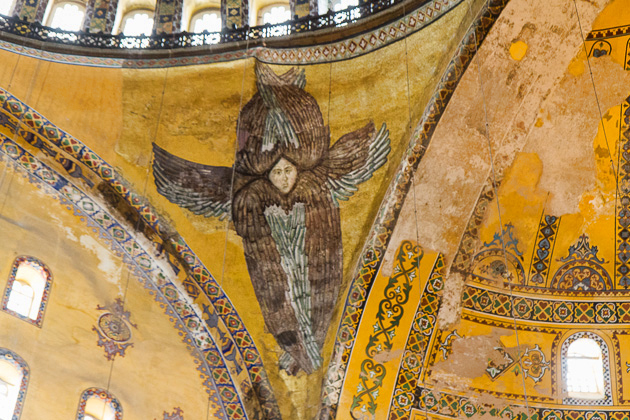
Impressive as the mosaics are, they can’t compete with the church’s dome: a true architectural wonder. Measuring in at 55 meters in height and 32 meters in diameter, with 40 windows that allow in abundant light, this dome was by far the largest ever attempted when it was constructed. Especially with the two half-domes which exaggerate its size, the dome creates an illusion of immense space. Standing down at ground level, looking up, it’s hard not to feel insignificant.
Yes, standing in the center of this church, looking up at the massive dome and its seraphim, admiring the giant Arab calligraphy, considering the number of emperors and sultans who have passed through here, and who have probably stood exactly where you’re standing right now… it’s very hard not to feel insignificant. Because, and it takes maybe an hour inside the Hagia Sophia before you start to genuinely grasp this, you really are insignificant. Look up again at that dome. Think about how long ago it was built, and then try to say aloud “My life has worth”. Ridiculous. You’re a tiny drop in the ocean of human history. You, your silly problems, your proudest accomplishments… they mean absolutely nothing.
Wow. Thanks for ruining my day, Hagia Sophia. But despite the small existential crisis, our visit here was one of the highlights of our time in Istanbul. Unforgettable.
Related Post: History of the Hagia Sofia
Hagia Sophia – Official Website
–Buy a framed photograph as a souvenirs of this amazing building
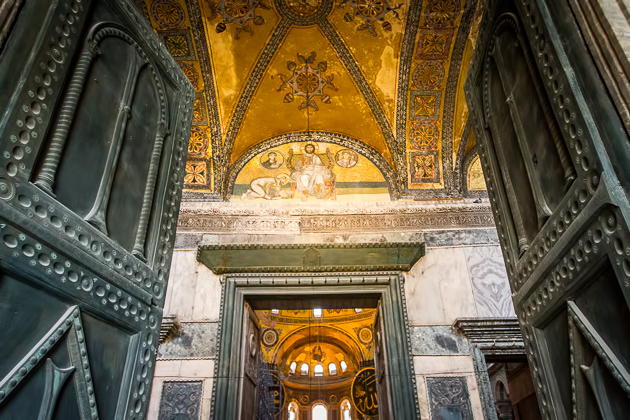
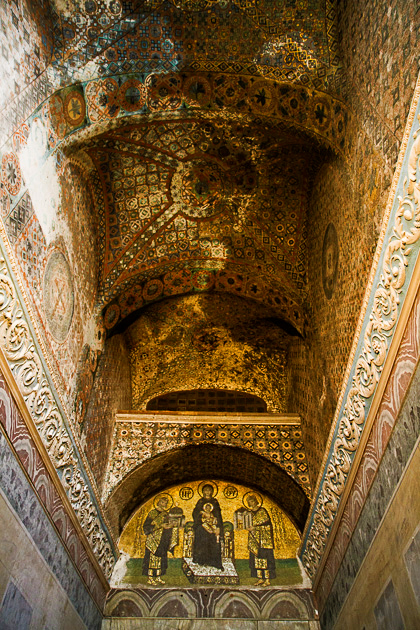


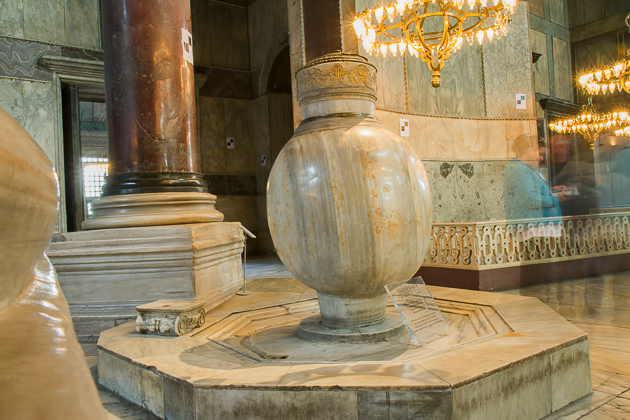
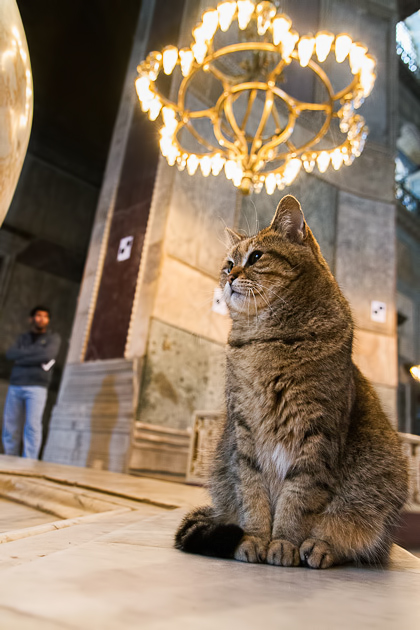
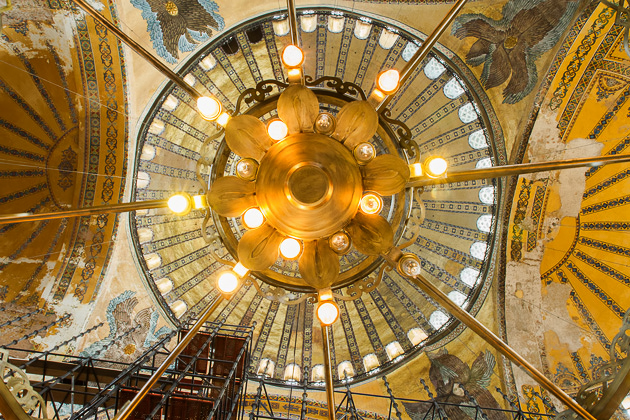
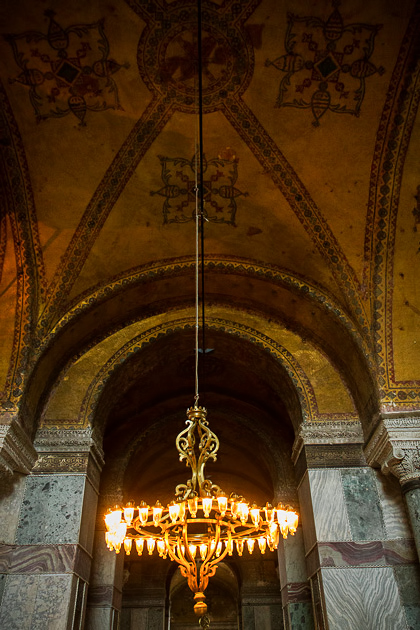
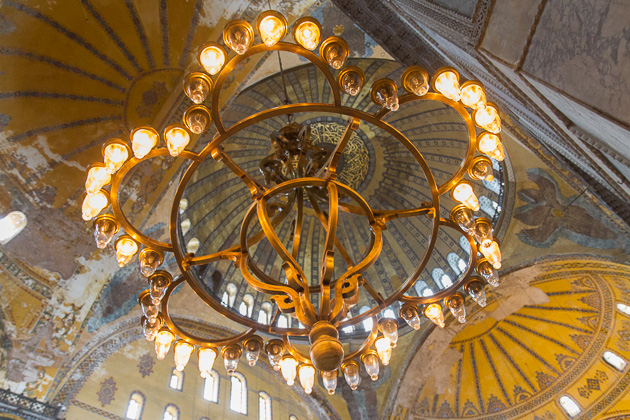
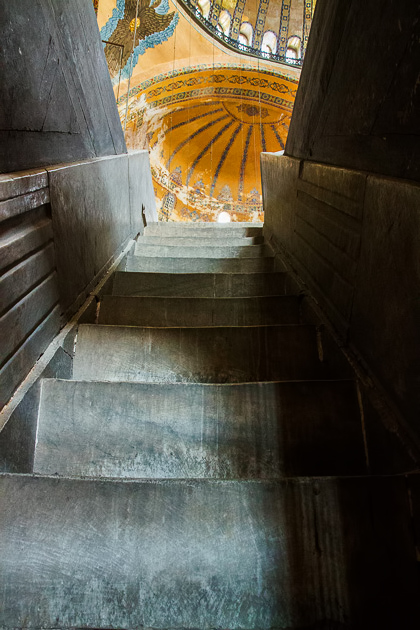
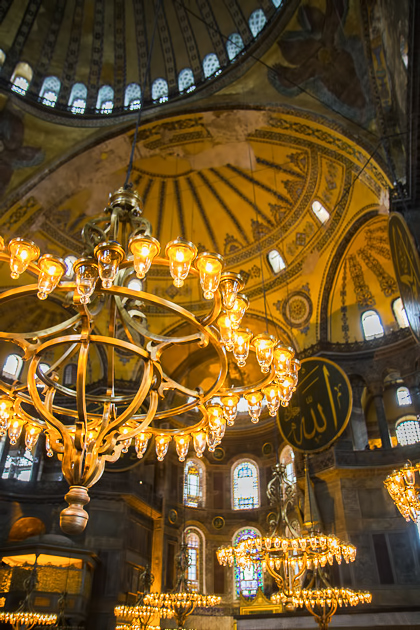
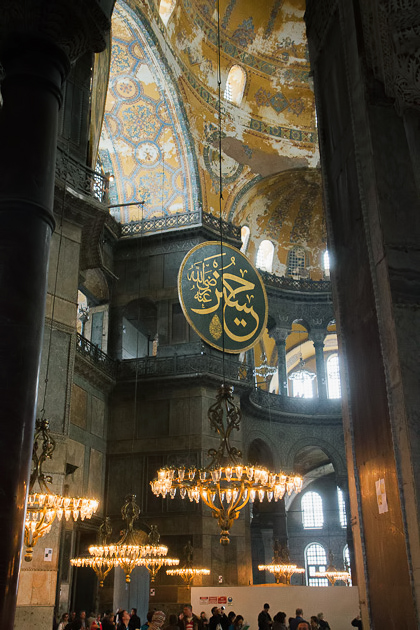
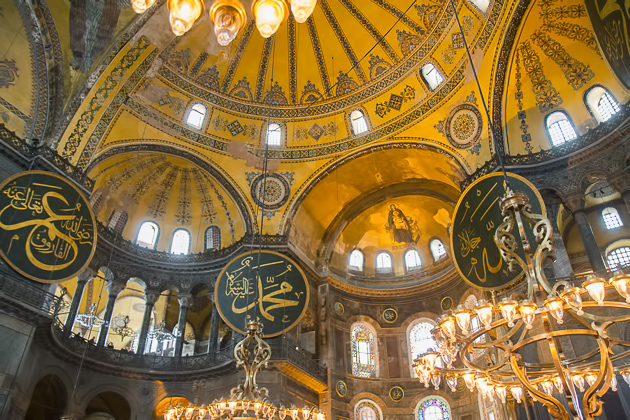

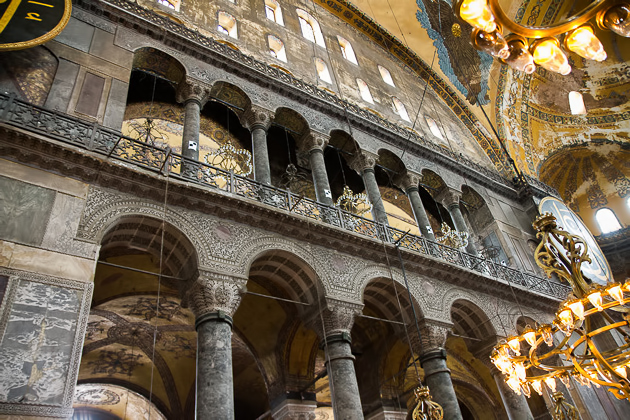
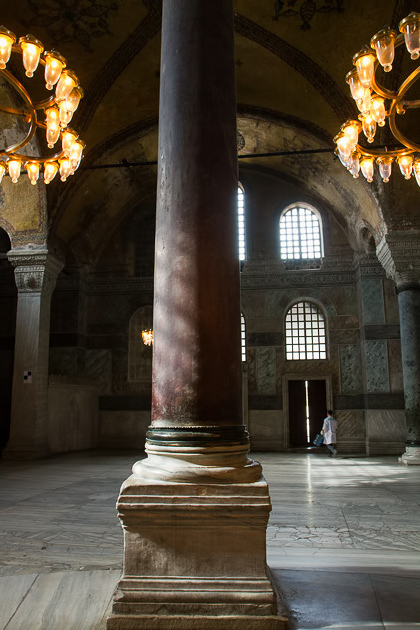
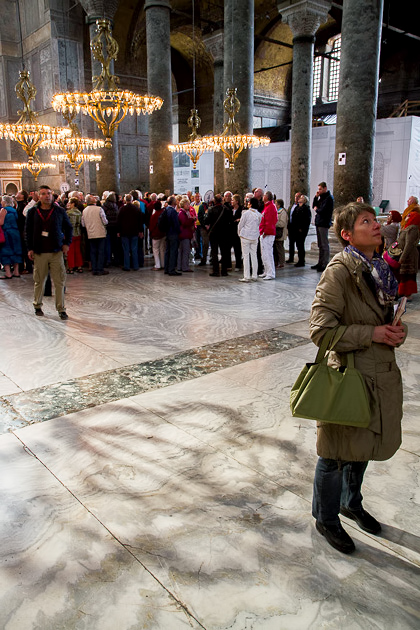
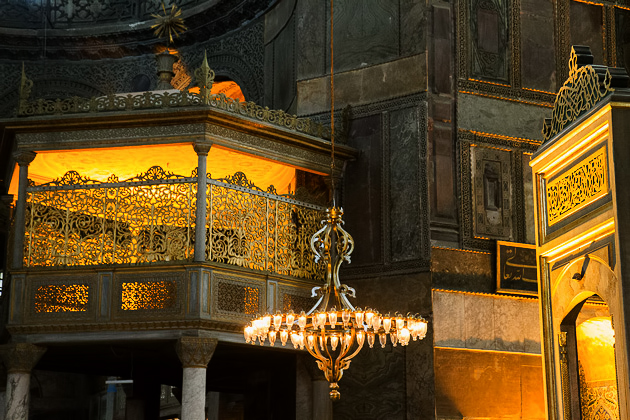
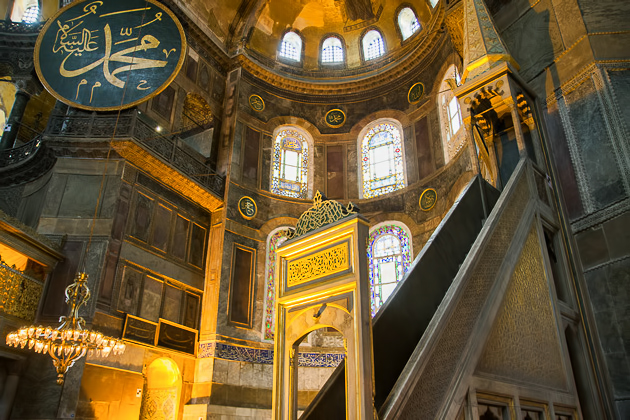

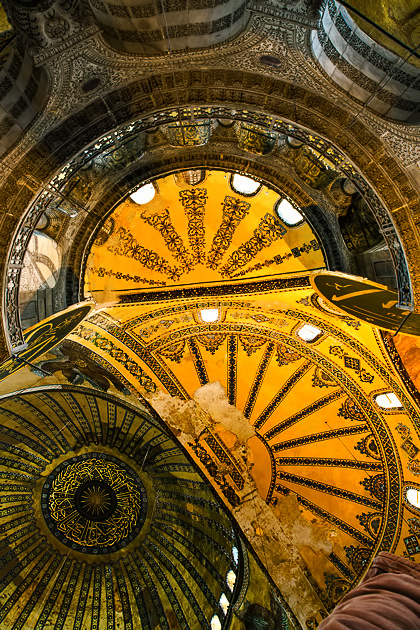
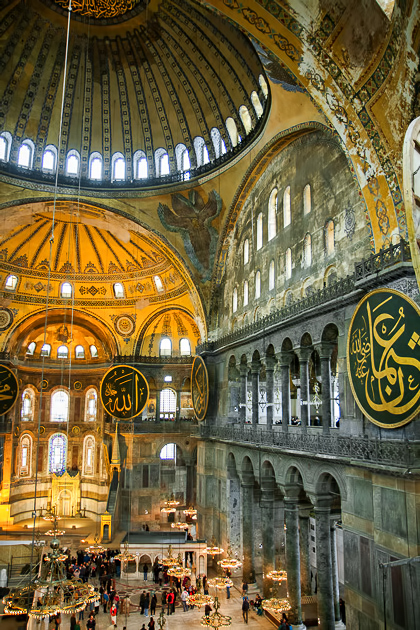
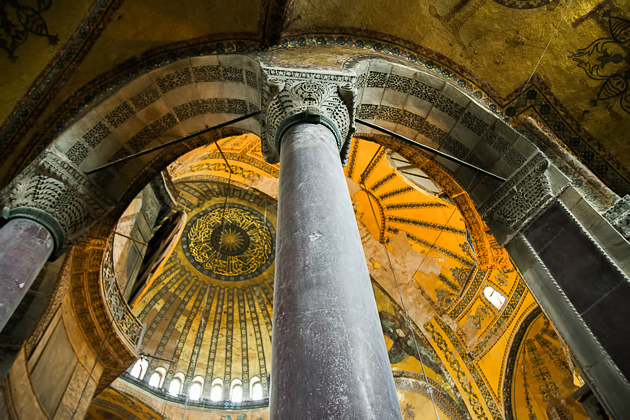
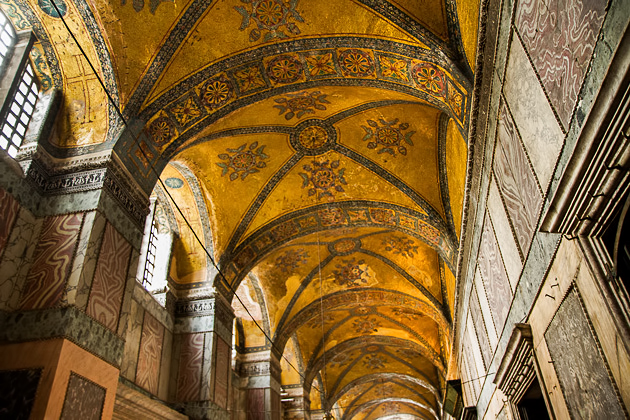
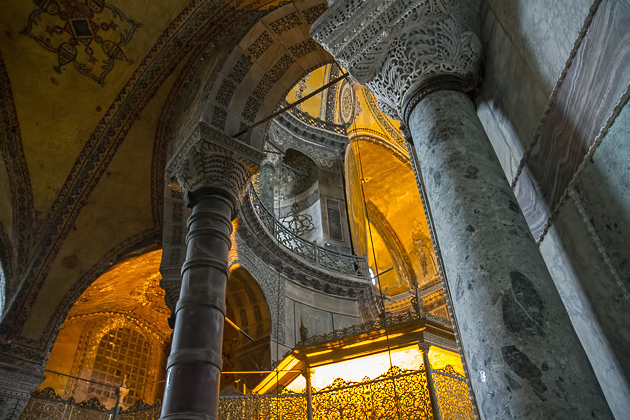


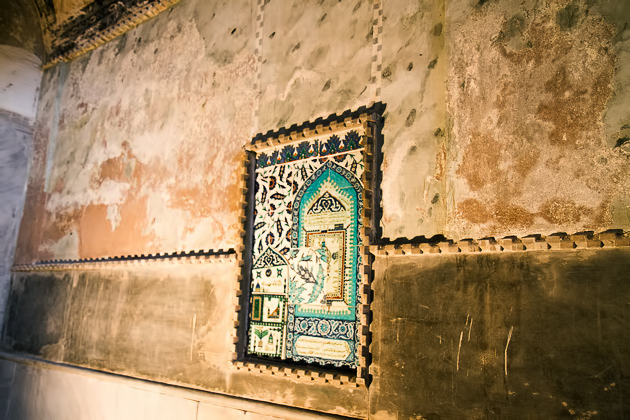
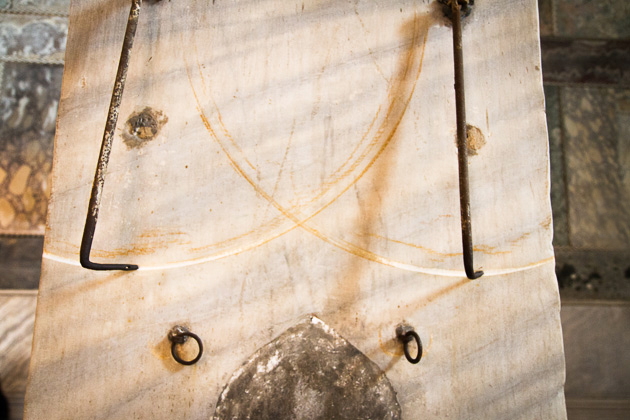

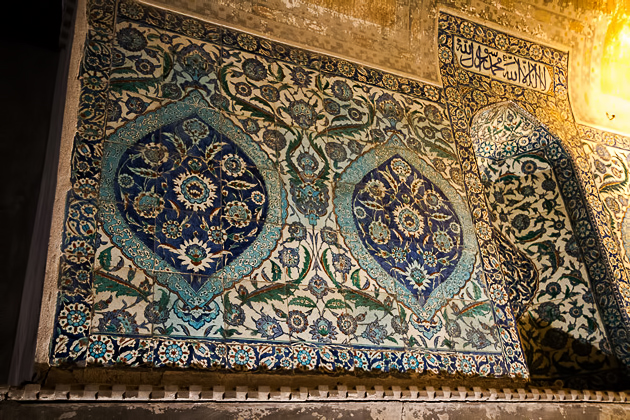


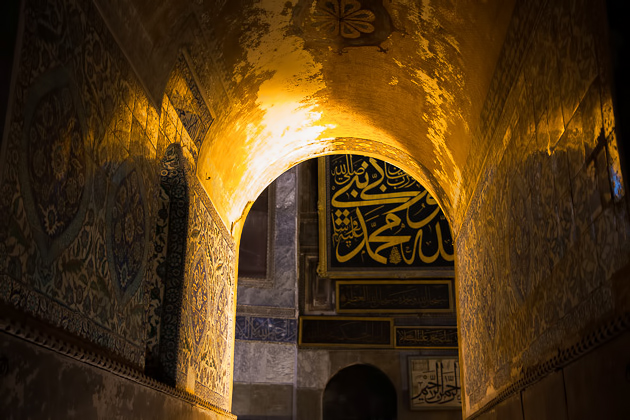
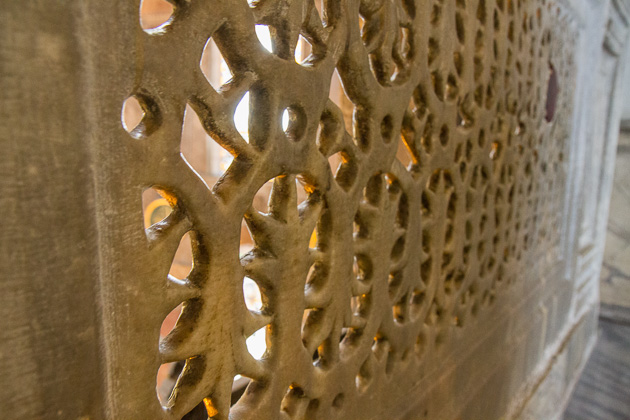
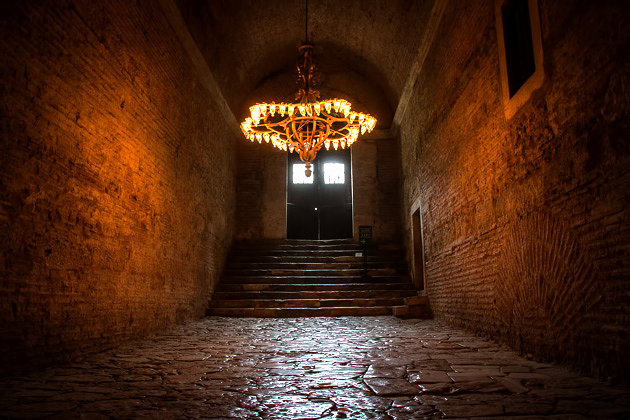
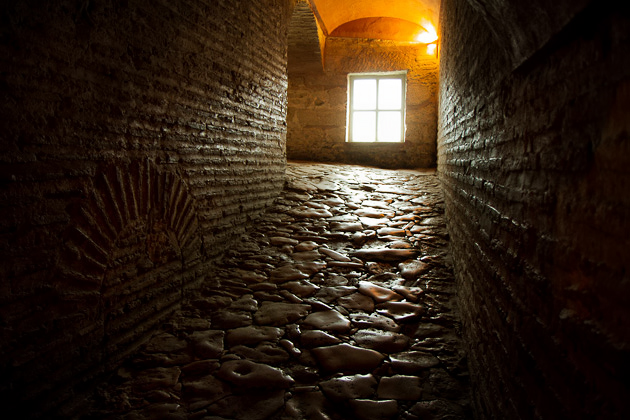

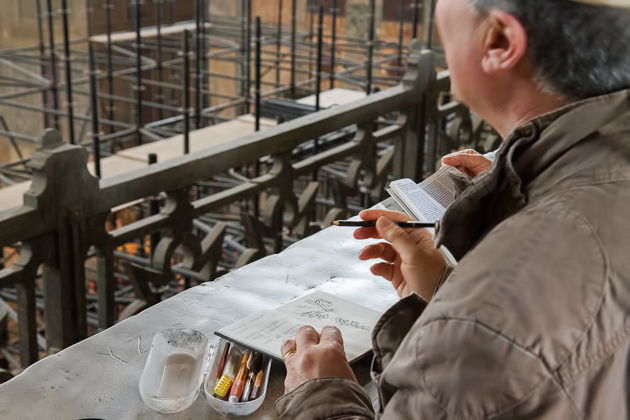
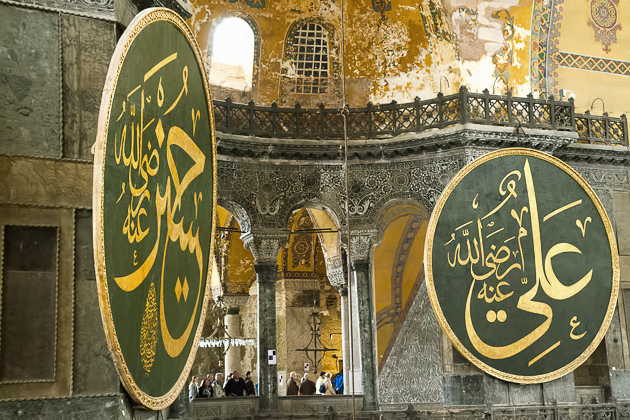


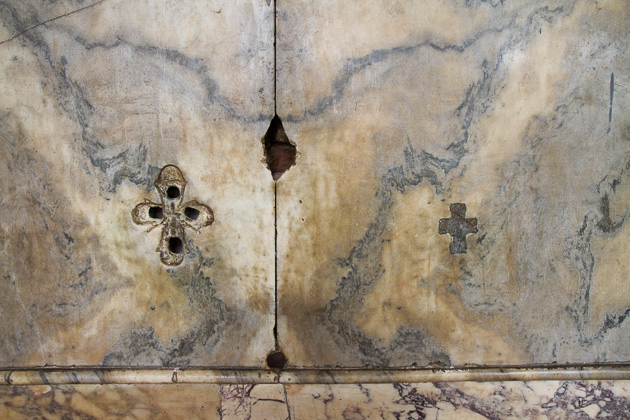

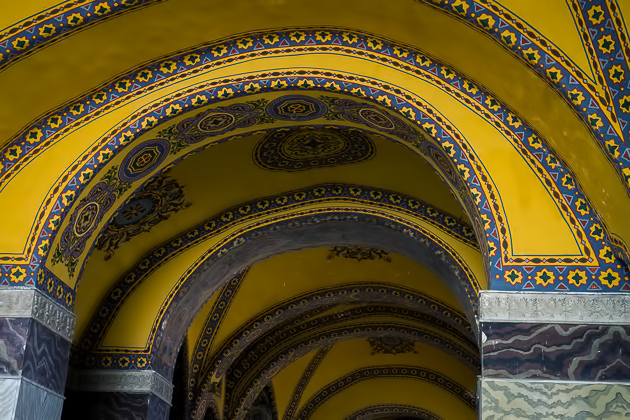
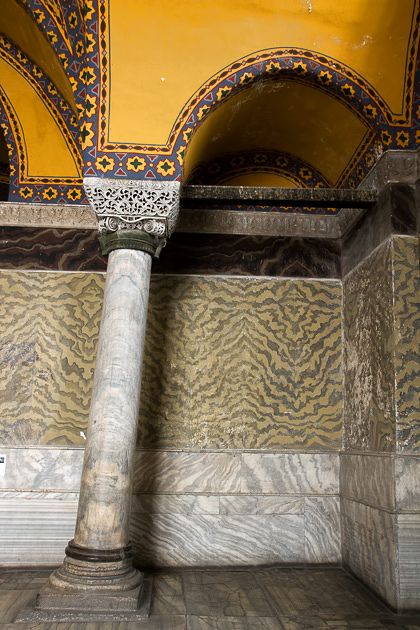
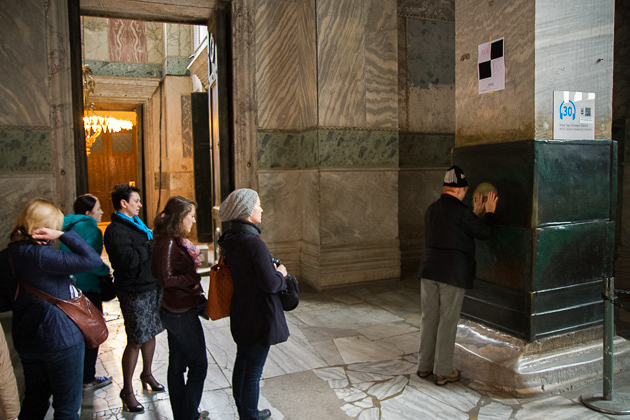
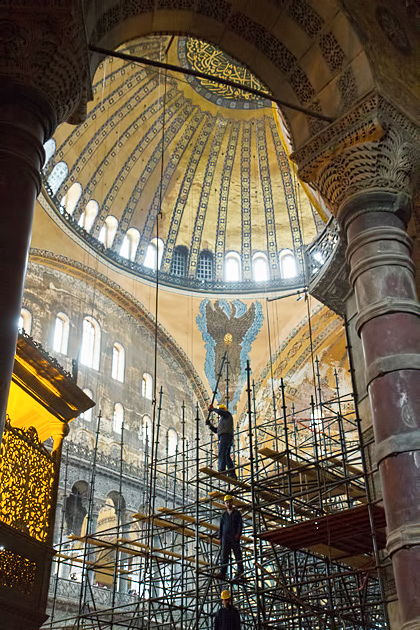
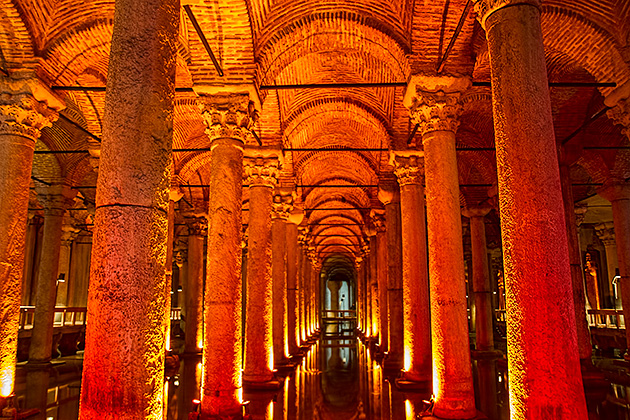
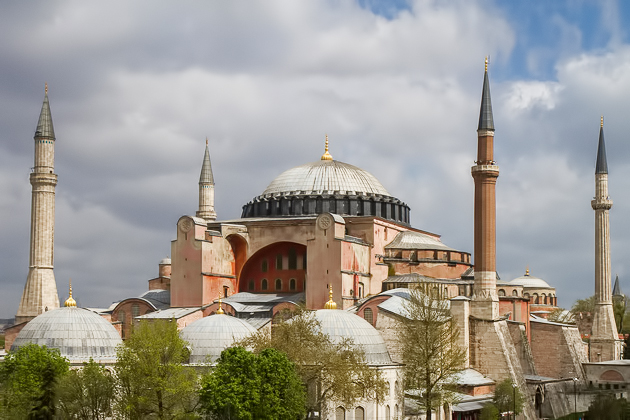
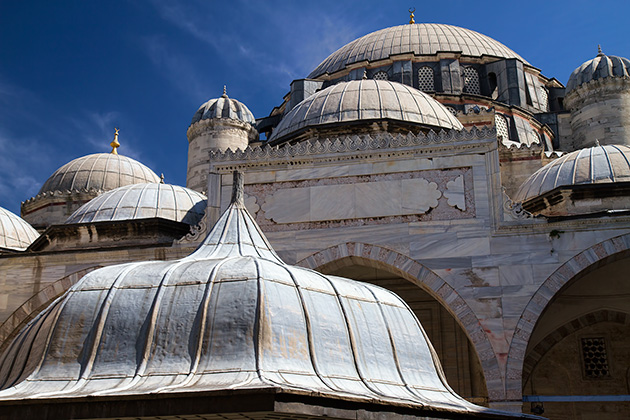
Awesome photos… and yes, I would feel very insignificant, indeed. I can’t imagine how huge the church must have seemed when the only lighting was by lamp and candlelight. Wow!
Wow those are some truly amazing shot!! I fell in love with Hagia Sophia the moment i walked in… thanks for bringing back such good memories!
Pingback: St. Mary of the Mongols and the Greek Orthodox Patriarchate | For 91 Days in Istanbul – Travel Blog
Pingback: The Cats of Istanbul | For 91 Days in Istanbul – Travel Blog
Wonderful photographs; some information please on the camera(s) and lenses used. Also, some of the photographs seem to have been taken from a height; how did you do that?